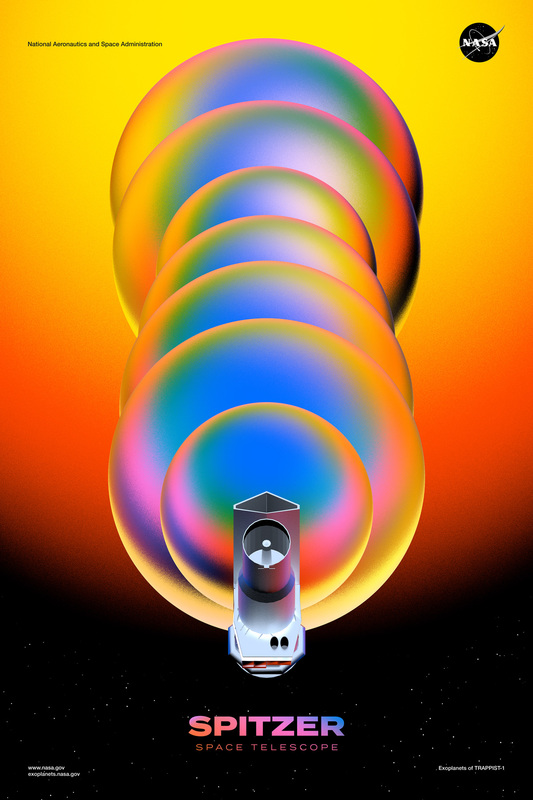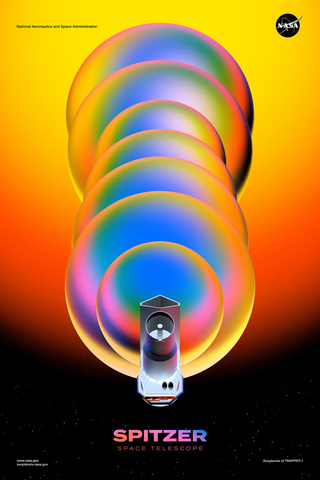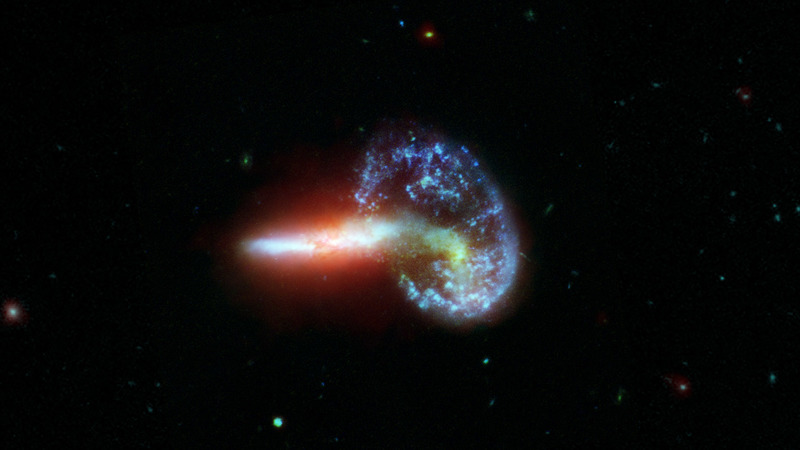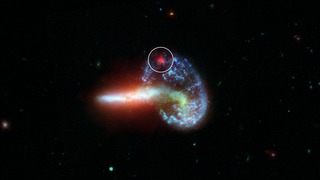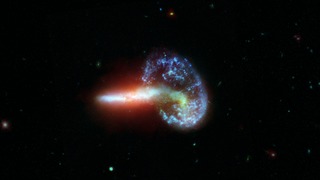
Credit: NASA/JPL-Caltech
Artwork • July 22nd, 2021 • ssc2021-04a
ssc2021-04a
The Spitzer Space Telescope, launched in 2003, on a mission to become NASA’s premier infrared light observatory. It offered astronomers an unprecedented infrared view of the universe, allowing us to peer into regions of space that are hidden from optical telescopes with unprecedented clarity and sensitivity. One of NASA’s Great Observatories, Spitzer discovered a ring of Saturn, studied some of the farthest galaxies, and identified two of the most distant supermassive black holes ever discovered, among other accomplishments in its 16 years of operation.
The study of exoplanets – planets outside our solar system – was not one of Spitzer’s original goals. But innovations during its mission improved Spitzer's precision and enabled it to become a critical tool for exoplanet work. Spitzer marked a new age in planetary science by being the first telescope to directly detect light from exoplanets. It has played a key scientific role in everything from planets larger than Jupiter to small, rocky worlds that may be similar to Earth.
In 2017, Spitzer helped reveal TRAPPIST-1, the first known system of seven Earth-sized planets. The discovery set a new record for the greatest number of habitable-zone planets found around a single star outside our solar system. Data from Spitzer also showed that all of these planets are likely to be rocky. Studying TRAPPIST-1 leads scientists a step closer to answering the question "Are we alone?"
This poster depicts the TRAPPIST-1 planets, some of which were discovered by Spitzer. The physical characteristics of the planets are not currently known, beyond their mass and distance from the TRAPPIST-1 star, which is visualized in the background. The James Webb Space Telescope is expected to teach us more about this fascinating system.
About the Object
- Name
- Spitzer Space Telescope
- Type
- Technology > Observatory > Telescope
